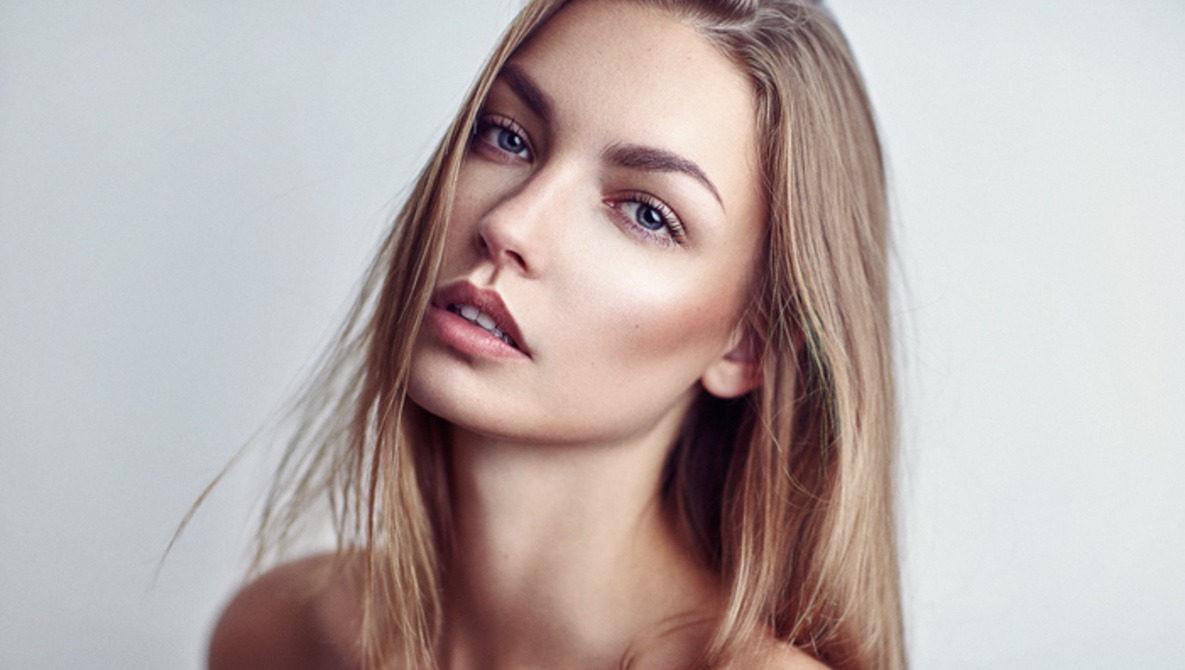Natural-looking images are making a comeback. If you look at recent issues of big magazines, you will see that makeup is often a nude with some shine to it, retouching is less "doll like," and even simple 1-light setups seem to be the standard. Some people will argue that it has been like this for quite some time. It is true, but I find that retouching is more flagrant than before. Even well known high-end retouchers seem to leave more imperfections in their images than a year ago. The most striking example I recently saw was an enormous billboard in the street of Paris. The model on it still had visible pimples even though it was an ad for an haute couture clothing brand. I find it rather reassuring to see our industry going back to more natural and realistic images. However, I still receive the same question over and over again from people wanting a natural looking image: How do you contour your portraits? I do not do much contouring anymore in post, and here is why.
The most important word as to why I contour less and less my images is: natural. If you want someone to look natural, forget about strong and visible contouring. A very simple example I am sure everyone knows of is Kim Kardashian. Sure she looks great, but whenever you look at her face with makeup on, you see that something is not natural or at least not like everyone else.
While contouring has its place, it should be used only very lightly and preferably done using makeup on set. Why on set? The first reason I see is to have a consistent contouring across a set of images. You do not want to make the jawline strong on one image and then round on the other. Any good makeup artist should be able to do this – quick tip on that matter, ask your makeup artist to contour using cream products and not powder, it give a more natural finish. Also having it done on set, is less work in post. But that should go without saying.
The biggest problem I see when people contour in post is that they tend to overdo it. While accentuating what the makeup artist has done is a very good idea, especially knowing that strobes can eat up to 30% of products, redoing it totally in post usually yields "doll like" results. Now, do not get me wrong. Some people like the doll/slick skin look, and I totally get it. To each their own. This article is about trying to get natural results.
A trend that is getting more and more famous in makeup is strobing. It works very much like contouring. Only we place shiny or very light products on the highest points of the face (bridge of the nose, high point of the chick bone, parts of the forehead, chin, cupid bow) and do not darken other areas. That way, the high points of the face stand out without looking unnatural. Because often the problem with contouring is the dark zones are too dark or too saturated, making the model's face look bizarre. So strobing is an excellent alternative in photography, and we can even translate that into Photoshop.
In a previous article I wrote, I talked indirectly about using this method in Photoshop. It was a piece about making the skin shine and look a bit more glowy. It is a great place to start if you do not feel comfortable doing it manually on a dodge & burn layer. If you want to learn more about contouring to see where to place highlights, I have also got you covered with this article to learn how we contour using makeup.
So next time you are retouching a portrait and aiming for a natural result, try to keep this in mind. If you do contour, only accentuate what has been done on set. If you want to make it more prominent for some reason, favor making highlights stronger rather than darkening shadows. Also never forget to play around with the opacity slider of your contouring layer. Even if you think you went lightly with your brush, it is often a good idea to lower the opacity of the layer to get a result that is subtle and thus more natural.









Thank you, oh worshipful retouching god! :D
I'm finally ahead of a trend!
Certainly a trend Ive seen coming up as well through all kinds of photography. Although I shoot pageant girls and harsh contour is still big in my industry for local pageant head shot, I HAVE seen strobing sneak its way into the images and I feel it helps create a stunning light on the model. anyways, great article, good tips and great read. :) Makes me want to go shoot some natural beauty!
great stuff!
How do you go about makeup on men? Would strobing be something you'd consider or something more neutral?
I have tried it with men and it works great. Just be careful, because with men it tends to look like they sweat more than anything when the skin is shiny ;) But principles are very much the same as for female models.
I have a headline for you:
"Why You Should Stop Telling us How to do What we do, Without Even Knowing What we do, How we do It, Why we do it, and The Final Results we Get"
In other words, make fewer assumptions and be less bossy with your headline. :)
One week you should contour, the other you should not. Yes it is fact that photographers need a good MUA and Hair, but this opinion based articles are not adding nothing new to the whole thing.